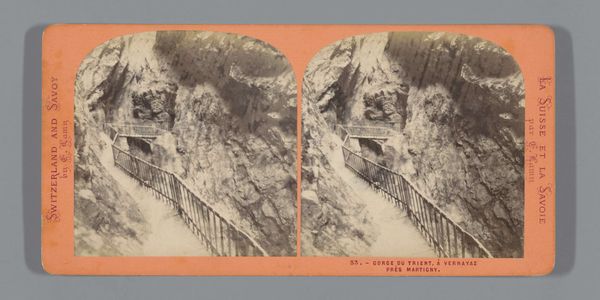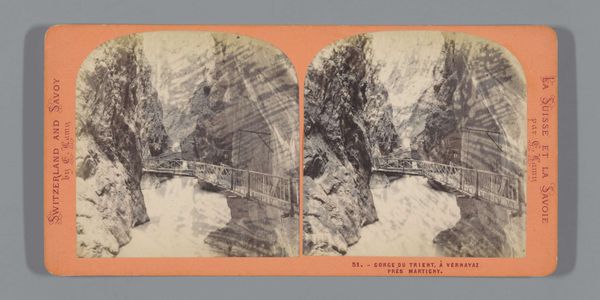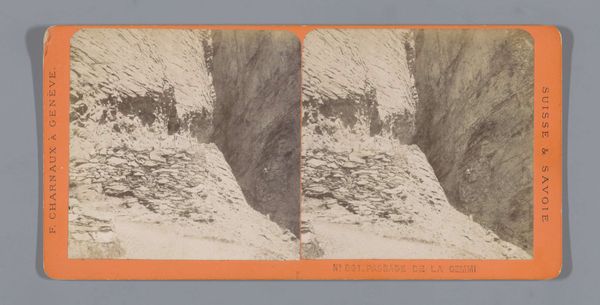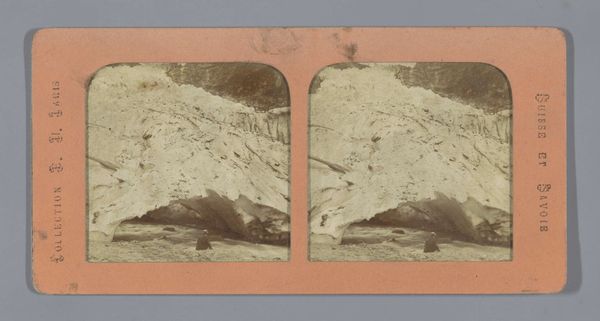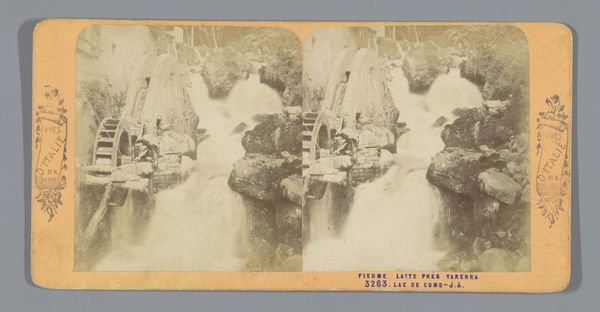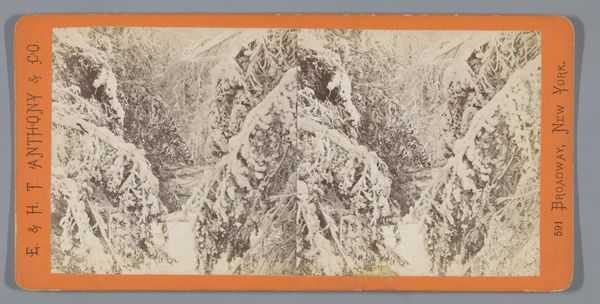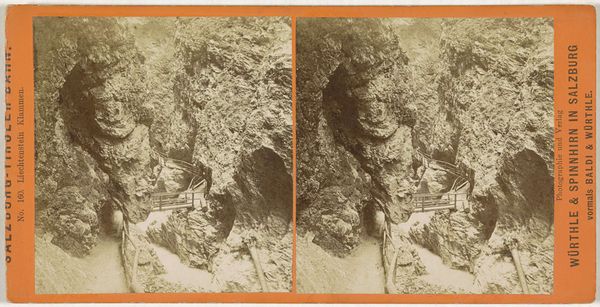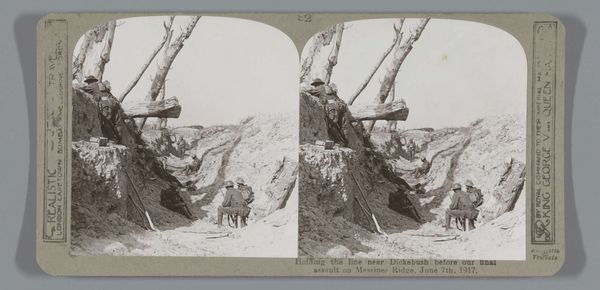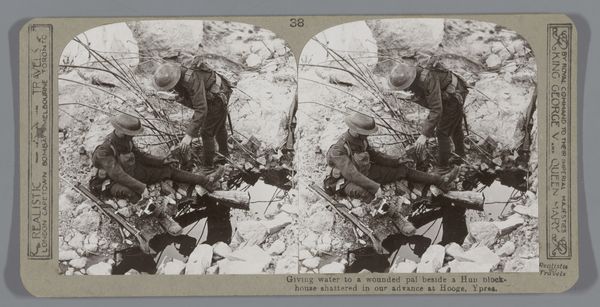
Dimensions: height 85 mm, width 170 mm
Copyright: Rijks Museum: Open Domain
Curator: What a striking stereoscopic card! This photographic print, "Looppad langs de Gorges du Trient" created by Ernest Eléonor Pierre Lamy sometime between 1860 and 1880 presents a walkway clinging to the side of a very steep gorge. Editor: It’s instantly gripping! The narrow walkway creates a sense of vertigo. All of the converging diagonals draw my eye down, and into what feels like the earth’s very mouth. Curator: This image taps into a rich vein of Romantic sensibilities, emphasizing the sublime power of nature against which humanity seems very small. During this period, advances in photography allowed for the dissemination of images of faraway and picturesque places. Editor: Precisely! The gorge itself feels deeply symbolic – a chasm that represents the unknown, and also the self. Water usually evokes feelings of the unconscious, of renewal…so what does it mean that we are facing what looks like very rough, almost white water, trapped inside the darkness of the gorge? Is it nature pushing back against the Industrial Revolution, a time of deep and unsettling change? Curator: A good point about industrial anxiety and Romanticism! Beyond art, Alpine scenery and landmarks in general became very marketable. Mass tourism grew rapidly as railway infrastructure improved, and photographers began catering to tourists looking for views of these kinds of sublime destinations. These photo cards like Lamy’s provided visual proof of a traveled experience and functioned almost like a souvenir. Editor: And that almost dizzying vantage point encourages a sense of wonder but perhaps also reminds them that these are sights they were very fortunate to witness and take home with them, in flat image form! This viewpoint reminds me of how ancient artists, even those of the Renaissance and the Medieval period, put the viewers "into" the painting by including certain elements... Curator: Certainly. Beyond documenting sublime grandeur, Lamy's image also captures a pivotal shift in how people experienced the natural world, where places that seemed so distant could become familiar consumer experiences. Editor: So much can be read into one relatively small and early photograph; it contains anxieties, wonders, societal shifts...Thank you for walking me along that path! Curator: My pleasure. Thinking about these types of images forces us to recognize that the aesthetic experiences we have aren’t ever free from socio-economic forces and the institutions that perpetuate certain tastes.
Comments
No comments
Be the first to comment and join the conversation on the ultimate creative platform.
